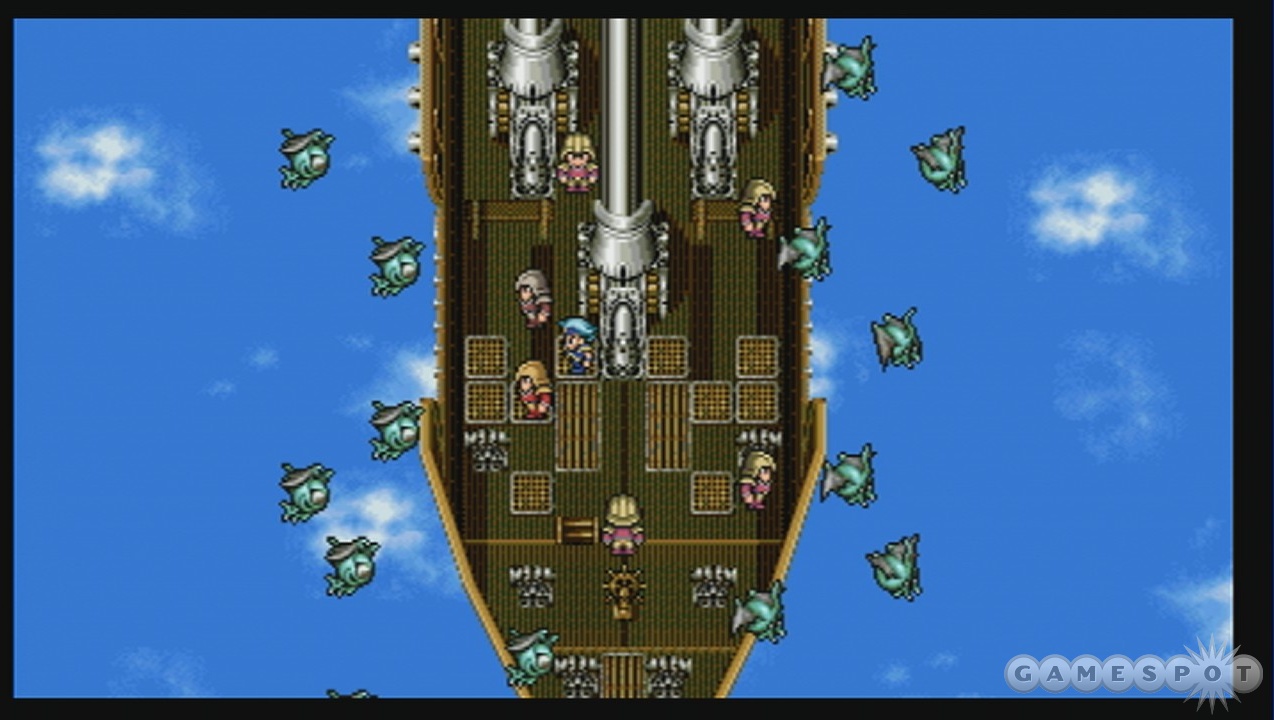When it was originally released nearly 18 years ago, Final Fantasy IV set the standard for an entire generation of role-playing games with its fantastic storytelling, technical prowess, and memorable characters. Unfortunately, the same cannot be said for Final Fantasy IV: The After Years, an untimely sequel with poorly conceived parallel storylines, among a number of other fatal flaws. This meager beginning to an episodic adventure is an ill-advised purchase for even the most nostalgic of fans.
Seventeen years after Cecil, Rosa, and the rest of the cast of Final Fantasy IV saved the world from a lunar conspiracy, the young Prince Ceodore of Baron is dispatched with the Red Wings (his kingdom's royal navy) on a test to prove his worth as a knight. When the second moon suddenly reappears and Baron is attacked by monsters, Ceodore is separated from his family and forced to go on a journey eerily similar to the one his father went on years earlier. In fact, they're almost completely identical, and though you see areas out of order and in slightly different ways, nearly every plot point is cribbed shamelessly from Final Fantasy IV. To make things worse, The After Years is less than half of a game--this first part of the overall story is to be supported by a series of other downloads, including a number of optional side stories in addition to the requisite story conclusion. What story you do get out of this piece of the puzzle is difficult to decipher thanks to the disjointed, parallel narratives. Simply shifting among multiple points of view doesn't help tell a better story without an interesting narrative thread, and The After Years lacks one entirely.
For much of this four hour-long game, Ceodore must roam the countryside, scale mountains, and meander through watery dungeons fending off monsters nearly every step of the way because the random encounter rate is frustratingly high. The active-time battle system from Final Fantasy IV returns to make the turn-based combat seem more effective in real time, but there have been several key changes. You can use up to three additional Wii remotes to have friends control specific characters exclusively during battle, much like many older RPGs. Menus now keep you informed of how close your characters are to unleashing spells or special moves, which helps you plan out your attacks better. Another helpful new feature is the ability to form a band of two or more characters to unleash powerful group combos, which, for the most part, need to be figured out through trial and error. Finally, every time you rest in a tent or an inn, the Lunarian moon will change phase, which affects the types of monsters that can appear and the effectiveness of different types of attacks for both you and your enemies (for example, a full moon increases the effectiveness of black magic while weakening physical attacks).
Just as the story of Final Fantasy IV is recycled in this sequel, graphics and music are also reused. Monster graphics are dusted off and put back on display with, at best, a color palette swap, and any "new" area you visit is constructed from existing artwork that appears elsewhere in the game. Fans with a discerning eye will spot several new sprites that fit right in with the others, but these are exceedingly rare. Similarly, the soundtrack sports a couple new themes, but, for the most part, it consists of a handful of the most memorable songs from the classic adventure.

With its flawed storytelling, shamelessly recycled plot, and frustrating encounter rate, Final Fantasy IV: The After Years is a hard pill to swallow for even the most dedicated of fans. At only 800 Wii points it may sound like a deal, but when you factor in the cost of all the subsequent add-ons (which are optional, but necessary to get the entire story) and concluding chapter, you'll be paying full retail prices. If you're willing to shell out that much and you've got a hankering to revisit Cecil's world, you could do much better with the Nintendo DS remake of Final Fantasy IV.